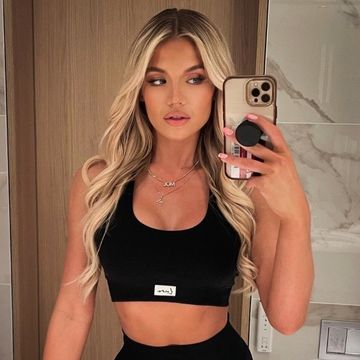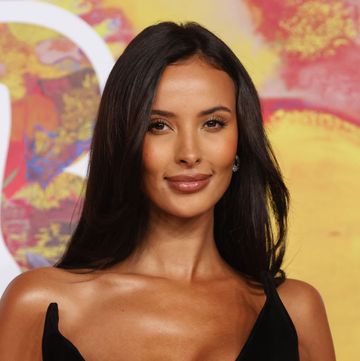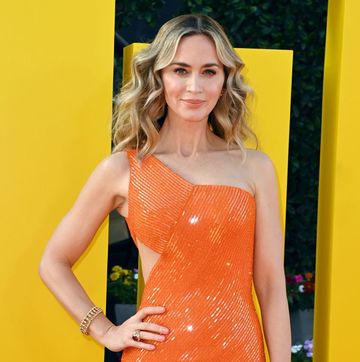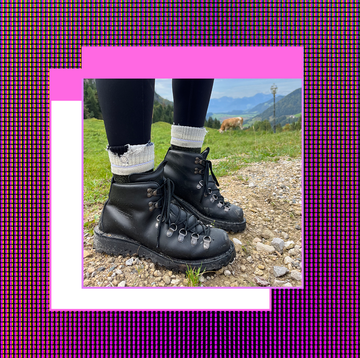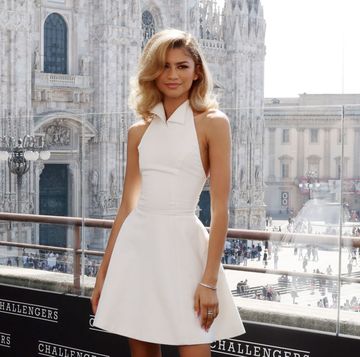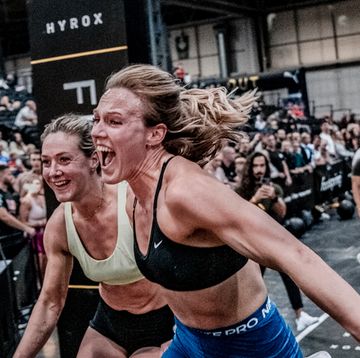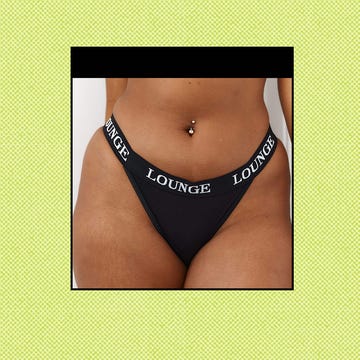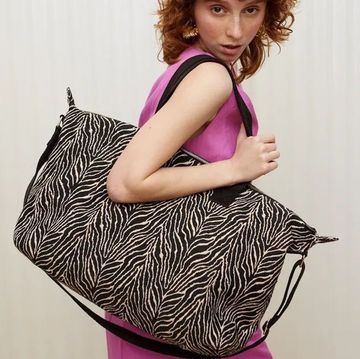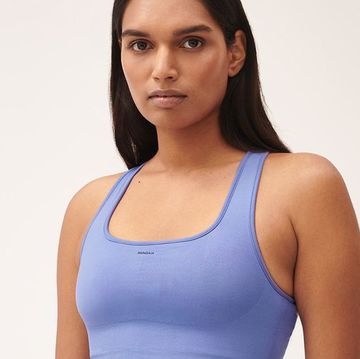We all know yoga is calming and good for you, but with about 4,000 different varieties on offer (now including naked classes), trying to work out which type you should be doing in the first place can somewhat take the zen out of it all...
To help clear up any confusion, we asked Hannah Barrett – instructor, author of Strength Through Yoga, and all-round expert, who you may better know as @Yoga Girl London on Instagram – to explain the different types out there:
What is Vinyasa Flow yoga?
Vinyasa flow classes focus on linking various different yoga moves together in a smooth and creative way, while keeping the breath in mind at all times. "Poses are usually linked via a sequence of planks to low planks (called Chaturanga Dandasana), or upward facing dogs to downward facing dogs (known as a 'vinyasa')," explains Hannah. "As classes can contain 5 to 50 'vinyasas', depending on the level and teacher, they can be a great upper body workout!" Vinyasa flow classes will also involve mindfulness and meditation, which is proven to help reduce stress, aid concentration and promote emotional wellbeing.
Good for: Anybody looking for something energetic with some mindfulness thrown in for good measure. This style of yoga really varies in difficulty, so if you're a total novice, make sure you choose a class that caters for beginners.
What is Hatha Yoga?
Hatha yoga is a generic term that refers to any type of yoga that teaches physical postures – when a class is labelled as Hatha, it generally means that you'll get a nice, gentle introduction to all the classic yoga poses and will hold them for longer than you would in a Vinyasa Flow class. "This will allow you to focus on alignment and balance, and refine your posture and breathing," says Hannah. You'll be acing that humble warrior in no time.
Good for: Beginners, or anyone who wants to go back to basics.
What is Ashtanga Yoga?
Meaning "eight limbs", Ashtanga is a powerful physical practice which follows a fixed sequence of postures that students aim to synchronise with their breath. You'll kick things off with sun salutations (to get the body warm), then move to standing and seated postures, before finally ending with a finishing sequence and a little rest. Lovely. "The practice will build internal heat, increase stamina, strength and flexibility," advises Hannah. "You'll build focus and concentration, and the more you practice the set sequence, the more it will start to feel like a moving meditation."
Good for: Those with time to spare – The Full Primary Series (the 'first' Ashtanga sequence) takes around 90 minutes to complete, so possibly not the best class for your lunch break. If you're a beginner, look for a newbie-friendly class, or a Mysore-style class (which encourages everyone to go through the sequence at their own pace, with a teacher on hand for guidance).
What is Power Yoga?
Power Yoga is an energetic variety of yoga, with lots of movement. It's an offshoot of Ashtanga and Vinyasa in the sense that it links movement with the breath and has teachers who design strong sequences, that allow one pose to flow into the next. "Classes are often hot, sweaty and have loud music on the go," adds Hannah. Sounds like yoga-meets-disco and ideal for fitness fans, in our humble opinion. Sign us up!
Good for: If you’re looking to work up a serious sweat, then this class is for you. Studios usually offer beginner level classes right up to more advanced ones, so you can pick whichever feels right for you.
What is Bikram Yoga?
Bikram Yoga is typically a 90-minute long class, featuring 26 established postures and two breathing exercises, all practiced inside a humid 35–42°C room. Phew! The sequence is designed to give your internal organs, veins, ligaments and muscles everything they need to maintain optimum health and function. "It’s the only class where sweat literally drips off me – and I’m not a sweaty person," our yogi guru Hannah says.
"Make sure to hydrate in advance, bring a towel and water to class, and think carefully about what to wear." If you normally wear leggings while working out, for example, this is the class where you may want to switch to shorts – imagine trying to downward dog in an airing cupboard for over an hour, then think about what you'd rather be clothed in. We thought so. As with any class, it's important to let the teacher know if you're suffering from any injuries and to be mindful of not pushing your body too hard.
Good for: Those already in fairly good health – if you're feeling run down or have an underlying medical condition, it may be best to avoid Bikram Yoga or consult your doctor first.
What is Yin Yoga?
This style is all about finding stillness and cooling down the body. It runs at an extremely slow pace, where postures are held for a longer period of time (generally between two and 20 minutes) than they would be in a more energetic class. You won’t find any planks or warriors in this set-up, either. "Physically, the practice aims to increase flexibility with the long, static holds. On an emotional level, it triggers the parasympathetic nervous system to help nourish, ground and calm you," says Hannah. Namaste, indeed.
Good for: Yin Yoga is a good way to complement an already active lifestyle or to help chill out a noisy mind. It's also been recommended as the best style to practice during your period.
What is Iyengar Yoga?
Developed in the 1960's by its yogi namesake, B. K. S Iyengar, this style of yoga places great emphasis on precision and alignment, making it a good practice for all ages and abilities. While Iyengar classes tend to move at a slower pace, that doesn't make them the easy option – far from it in fact, says Hannah. "Iyengar teachers go through vigorous training and are well experienced to help you find your own level, maximising the use of props to make the practice accessible for everyone." Through breathing techniques and postures, you'll build both strength and flexibility too.
Good for: Any and all, by the sounds of it!
What is Prenatal (or Postnatal) Yoga?
Much like it says on the tin, this type of yoga is designed to be safe and accessible either during or shortly after pregnancy. "The benefits of exercising during and after pregnancy are numerous, including an improved labour and reduced risk of common postpartum problems, such as back pain," says Hannah, who is a postnatal health and fitness specialist.
She also advocates this type of yoga as a stress, anxiety and depression soother (which are all common emotions to experience when you're going through a big life change, such as becoming a mother). "Coming to the mat, focusing on your breath and moving mindfully can help restore a sense of calm. It can also be really helpful and comforting to be in a class with others going through a similar experience."
Good for: Those who'd like to connect with other future parents, maintain their fitness levels and strength during or after pregnancy, or who are seeking some zen whilst expecting.
Hannah Barrett is a yoga instructor, author and postnatal specialist. Her book, Strength Through Yoga, is available from Yoga Girl London, £39.99
Like this article? Sign up to our newsletter to get more articles like this delivered straight to your inbox.
Jennifer Savin is Cosmopolitan UK's multiple award-winning Features Editor, who was crowned Digital Journalist of the Year for her work tackling the issues most important to young women. She regularly covers breaking news, cultural trends, health, the royals and more, using her esteemed connections to access the best experts along the way. She's grilled everyone from high-profile politicians to A-list celebrities, and has sensitively interviewed hundreds of people about their real life stories. In addition to this, Jennifer is widely known for her own undercover investigations and campaign work, which includes successfully petitioning the government for change around topics like abortion rights and image-based sexual abuse. Jennifer is also a published author, documentary consultant (helping to create BBC’s Deepfake Porn: Could You Be Next?) and a patron for Y.E.S. (a youth services charity). Alongside Cosmopolitan, Jennifer has written for The Times, Women’s Health, ELLE and numerous other publications, appeared on podcasts, and spoken on (and hosted) panels for the Women of the World Festival, the University of Manchester and more. In her spare time, Jennifer is a big fan of lipstick, leopard print and over-ordering at dinner. Follow Jennifer on Instagram, X or LinkedIn.






